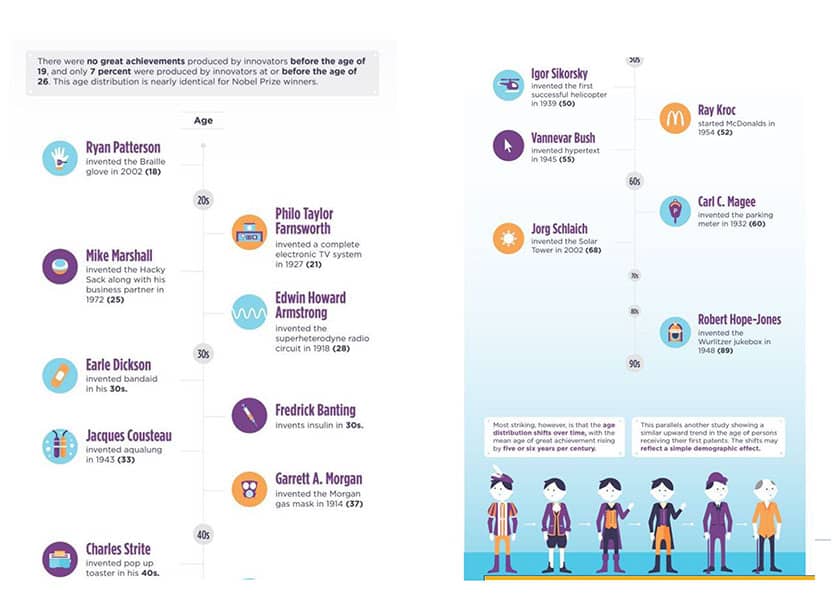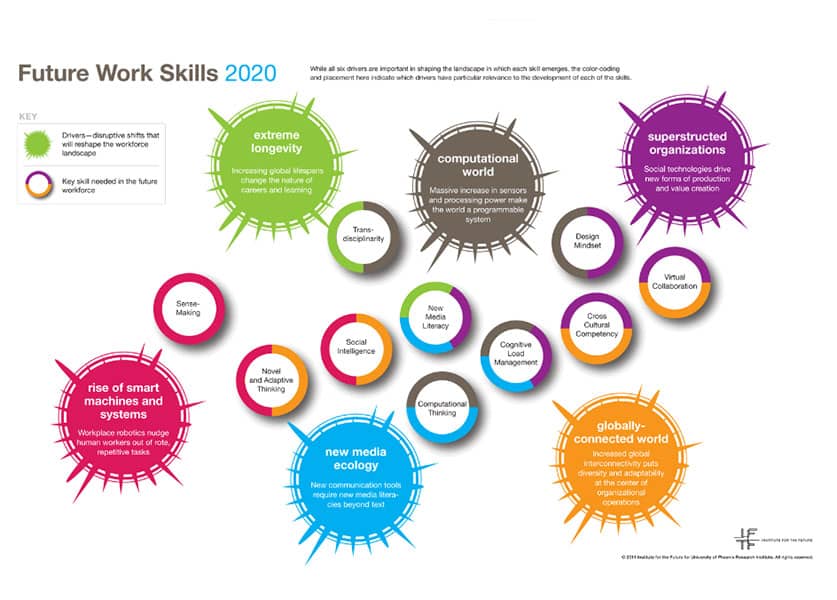With a workforce that is living longer, the need for continuing education and the nature of careers is altering workplace dynamics.

Thanks to medicine, technology, and improvements in public health, we are living longer. According to the Centers for Disease Control and Prevention, the U.S. life expectancy reached 78.8 years in 2014. Active lifestyles, healthy eating habits, and personal goal tracking are just a few reasons why and, consequently, these new ways of living are impacting how we work and the environments that support them.
The Institute for the Future (IFTF) stated in its Future Work Skills 2020 report that “as we move toward to a world of healthier lifestyles and holistic approaches to what we eat, how we work, and where we live, much of daily life—and the global economy as a whole—will be viewed through the lens of health.” Wellness is at the forefront of workplace design with an emphasis on physical activity through active design features, treadmill and stand-up desks, even yoga balls as seating options. Companies are stocking pantries and cafes with unprocessed food, and employees are making a conscious effort to limit sitting for prolonged periods. As we continue to view our lives through the lens of health, life expectancy will continue to grow.
Mainstream media posits that because we are living longer and working longer there will be more generations working side-by-side, but the implications of living longer go beyond a generational mix in the workplace and how designers respond to this change. We are beginning to witness organizational cultures and environments support life-long learning, multiple jobs and careers, and new skills sets.
Lifelong Learning
Lifelong learning is about continuing education, the blending of disciplines, and serving both personal and organizational longevity. As the pace of business continues to accelerate, employees’ knowledge and educational backgrounds are quickly becoming obsolete or reinvented. Accordingly, the need to educate oneself throughout his or her career is becoming de rigueur.
Longer lifespans and technological advances have also cultivated this paradigm of lifelong learning, but what is most important is how this will be supported in the future by organizations and places of work. Changes will include more flexible hours to support “class time,” supplementary or enhanced learning environments that support training and development, and a shift in an organization’s reward system. There will be an increasing shift in the balance between salary, lifestyle, and career enhancement. Lifelong learning will also stimulate a cultural change with regard to employee motivation and its impact on a company’s bottom line. Organizations will encourage employees to educate themselves as it will impact organizational sustainability and competitive advantage.

Multiple Jobs & Careers
It is no longer commonplace to stay with one employer for your entire career. As Millennials and younger generations continue to push this agenda, organizations will shift a focus from retention to positive, short experiences in hopes of sustaining long-term relationships with employees for future recruitment and referrals. This will create a higher demand on what workplace flexibility and mobility means in response to steady turnover.
Beyond job-hopping, workers will be interested in multiple careers throughout their lifetime. According to IFTF, “Multiple careers will be commonplace and lifelong learning to prepare for occupational change will see major growth. To take advantage of this well-experienced and still vital workforce, organizations will have to rethink the traditional career paths in organizations, creating more diversity and flexibility.” Contrary to multiple jobs, multiple careers may actually encourage staff to stay with their organization, but to work in different departments or take on entirely different roles. Designers and managers of the workplace will need to provide and maintain real estate that can flex to support both of these scenarios.

New Skill Sets
As change becomes constant in the workplace and the desire for multiple careers flourishes, employees’ skill sets will transform correspondingly. According to an article in Forbes, PwC’s Annual Global CEO Study revealed that “66 percent of CEOs say that the absence of necessary skills is their biggest talent challenge.” Computational thinking and new media literacy are just a few of the skills IFTF predicts will be needed of our future workforce. With employees acquiring new skills – and faster than ever – the tools and workspaces to support them will also need to adapt.
As workplace visionaries and designers, the global trend of longer lifespans will have a significant effect on the future of work and place, evolving culture and space in ways unimaginable.

